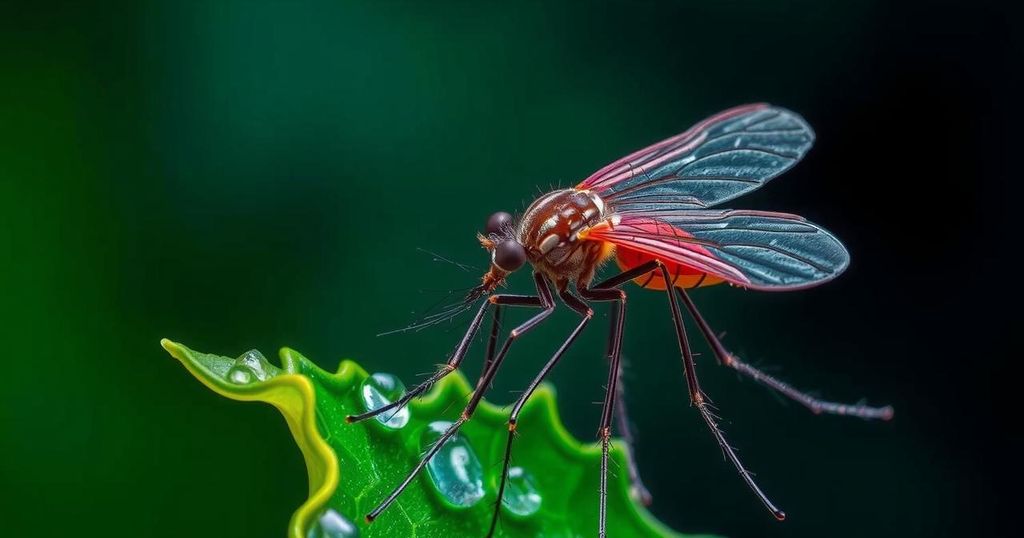Research indicates that climate change is significantly increasing the incidence of dengue fever, with projections suggesting a potential doubling of cases in the next 25 years in Asia and the Americas. Current findings highlight a 19% contribution of climate factors to the existing dengue burden, with predictions of a 61% average increase by 2050 under high emissions scenarios. Mitigation efforts could reduce this burden by 18%.
Recent research indicates a significant link between climate change and the rise of dengue fever cases globally. At least 257 million individuals live in regions where climate warming could potentially double dengue incidences within the next 25 years in Asia and the Americas. This viral infection poses mild to severe symptoms, with no current treatment available. Preliminary findings presented at the annual conference of the American Society of Tropical Medicine and Hygiene reveal that climate change accounts for 19% of the existing dengue burden. Researchers predict that, under high emissions scenarios, the dengue burden may increase by an average of 61% by 2050, with certain cooler areas experiencing an upsurge of over 100%. Conversely, effective carbon emission mitigation could potentially reduce this increase by 18%. Dr. Erin Mordecai, a senior researcher, emphasizes a strong correlation between rising temperatures and dengue infections, noting the substantial threat climate change poses to public health. The mosquito species responsible for transmitting dengue thrive in specific temperature ranges, prompting concerns for dengue-endemic regions like Peru, Mexico, Bolivia, and Brazil, where infection rates may escalate by 150% to 200% in the coming decades. Moreover, projections indicate that even with stringent emissions reductions, most countries studied would still face climate-driven rises in dengue cases.
Dengue fever, caused by the dengue virus and transmitted primarily by the Aedes aegypti and Aedes albopictus mosquitoes, presents serious public health challenges worldwide. Symptoms of dengue may range from mild, such as fever and flu-like signs, to severe manifestations including hemorrhagic fever, which can lead to shock and mortality. The disease remains uncurable, emphasizing the urgency for preventative measures. Current studies link the increasing incidences of dengue to global warming, highlighting the vulnerabilities of populations in areas becoming suitable for the mosquito vectors due to temperature changes driven by climate change.
In summary, the impact of climate change on the rising cases of dengue fever is profound, with a significant number of individuals at risk in the coming decades. As temperatures continue to rise, effective interventions to lower carbon emissions could mitigate the anticipated increases in dengue burden. However, the current trend underscores an urgent need for public health initiatives and research to address the challenges posed by our changing climate. The available data reiterate that climate change not only threatens environmental stability but also significantly endangers human health.
Original Source: cosmosmagazine.com






